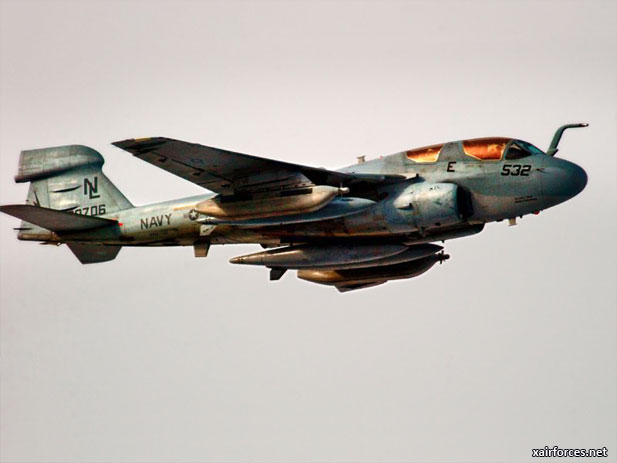
U.S. Asymmetric Advantage in Airborne Electronic Attack in Danger of Eroding

For decades, the U.S. military has been the world’s leader in airborne electronic attack (AEA). A branch of electronic warfare, AEA involves the use of aircraft and airborne systems to neutralize, destroy, or suppress enemy air defenses, communications networks, command and control capabilities and selective ISR assets.
During the Cold War, AEA was considered absolutely essential to defeating the Soviet Union’s vast integrated air defense system. Today, AEA is increasingly critical to the survivability of air assets seeking to enter denied air space. An AEA capability is absolutely essential to any offensive air operation. Even the B-2 does not go forth to strike targets half a world away without AEA support. In addition, as the experience of the past decade has demonstrated, AEA platforms are extremely valuable in countering low-end electronic devices such as many of the triggers used to detonate improvised explosive devices.
Prospective adversaries are working hard on ways of denying U.S. forces access to their air space. Older surveillance radars are being upgraded with advanced signal processing computers. New generations of sensors are being deployed, some on aerial platforms. Advanced air defense capabilities such as the Russian S-400 and S-500 are being fielded. In the near future, U.S. joint forces will require a combination of stealth, new weapons and advanced AEA in order to have assurance of successfully penetrating advanced air defenses.
Unfortunately, the U.S. asymmetric advantage in AEA is in danger of eroding. The once relatively robust fleet of AEA platforms is shrinking. The Air Force’s EF-111 Ravens have long since been retired and efforts to develop a new, dedicated Air Force AEA capability have floundered. The Air Force does maintain some 14 EC-130 Compass Call airborne jammers. The Air Force’s F-22 and the tri-service F-35 fighters could take on some of the AEA mission, assuming that all of them are not busy performing more important tasks such as air superiority or ground attack. Alternative AEA platforms such as the Miniature Air-Launched Decoy or jammer-equipped unmanned aerial systems are in development. In reality, today, virtually the entire responsibility for offensive AEA rests with the Navy and Marine Corps’ fleet of some 100 aging EA-6B Prowlers and its replacement, the new EA-18 Growler.
As the size of the AEA fleet shrinks, the demand for its services grows. Already the requirements from the Combatant Commands for AEA exceed current aircraft availability. Moreover, the current plan is to retire the four Marine Corps AEA squadrons rather than replacing their Prowlers with Growlers, further shrinking the size of the fleet.
This isn’t the end of the problem. Without additional orders, the F-18 production line is scheduled to shut down in 2013. Should this happen, the Department of Defense will be left with no options for reconstituting lost capabilities or simply increasing the number of AEA platforms to meet demand.
The U.S. Navy has a program to develop the Next Generation Jammer, a system intended to counter the growing electronic warfare and air defense threats. It would be ironic if having spent billions to produce a state-of-the-art jammer, DoD found itself without sufficient airborne platforms to deploy the new capability.
Source: Daniel Goure, Ph.D. / Early Warning Blog, Lexington Institute News - 10 October 2012
Photo: Virtually the entire responsibility for AEA rests with EA-6B Prowler (Photo by US Navy)
(10.10.2012)
|